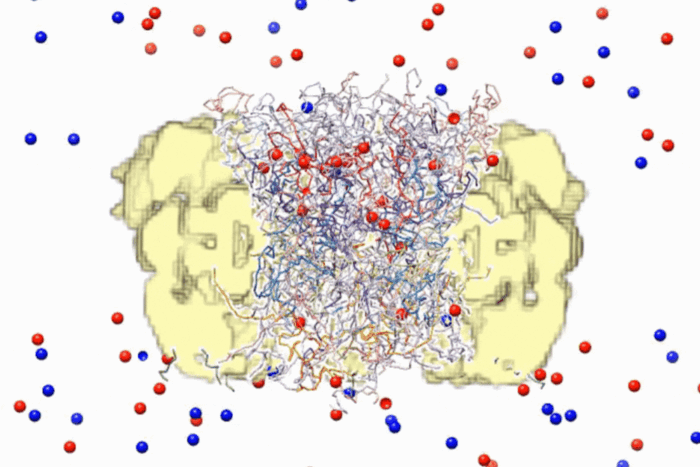Researchers Propose New Theory to Explain How Visual Pigments are "Tuned"
Scientists from the Howard Hughes Medical Institute (HHMI) at The Rockefeller University and from the University of California-Berkeley have proposed a new theory on how the human eye perceives colors. Using techniques of molecular biology and spectroscopy, the research, reported in the August issue ofTrends in Biochemical Sciences, changes the way scientists have thought about color vision for nearly 20 years.
“Over the years weíve worked through a number of mutant pigments and put all this information together to propose a theory for the mechanism of spectral tuning,” says Thomas P. Sakmar, M.D., professor and head of the Laboratory of Molecular Biology and Biochemistry at Rockefeller and an associate investigator at HHMI. “We have found that the most likely mechanism to explain spectral tuning in visual pigments is different from what has been proposed in the last 20 to 30 years based on theoretical principles.”
Human vision begins when an image is detected by the light-sensitive cells of the retina at the back of the eye. Light absorption by these photoreceptors triggers a cascade of chemical reactions, leading to an electrical signal that is passed to other layers of the retina and on to the brain. The retina contains two types of cells that detect light: rod cells, which detect dim light, and the cone cells, which detect colors. In fact, the cone cells are specialized into three types, each of which detects one of the primary colors, or pigments (red, blue or green). Each of these pigments contains the same light-absorbing component, called a chromophoreóvitamin A. Vitamin A is the essential vitamin that binds to a protein called opsin to form the actual pigment. If each pigment has the same chromophore, how does the eye distinguish colors? It turns out that the difference between pigments in terms of how they detect specific colors, called spectral tuning, is related to differences in the amino acid sequence of the opsin proteins and how these amino acids interact with the chromophore.
About eight years ago, Sakmar teamed with Richard A. Mathies, Ph.D., at U.C.-Berkeley to study pigments cultured in test tubes to answer the question of the underlying physical basis for this tuning mechanism.
The scientists used a technique called Raman spectroscopy, which measures the wavelength and intensity of light scattered from molecules excited by lasers. Molecular vibrations produce changes in the wavelength of the scattered light, which gives scientists clues to the structure of a molecule.
“We were the first lab to apply these kinds of spectroscopic methods to recombinant pigments that we actually made in tissue culture, tailor made to address specific questions,” says Sakmar.
Researchers previously thought that electrically charged molecules in the protein interacted with the chromophore to tune the spectrum. The studies by Sakmar and Mathies show that the binding pocket for the vitamin, where the chromophore is tightly held by the pigment, is electrically neutral.
“We did not find any charged groups,” says Sakmar, “so that disproves the previous model.”
When a packet of light energy called a photon hits the eye, more than one of the three types of cone cells will be stimulated. The retina and the brain process the mixture of the stimulation so that different hues and intensities are perceived, allowing many more colors to be recognized than the three detected by the cone cells.
“You really need overlapping spectra for color vision to work,” says Sakmar. “You need to have the spectra tuned properly so they are far enough apart to give you the whole visual spectrum, but close enough together to overlap.”
The scientists propose that long range molecular interactions tune the wavelength of light absorbed by photoreceptors. They show that a specific class of amino acids — called polar amino acids ñ can cluster around the chromophore to shift its absorption toward the blue or toward the red ends of the spectrum. Human trichromatic color vision depends on the presence of three opsin proteins ñ each with distinct numbers and arrangements of polar amino acids. These color shifts enable the entire visible spectrum to be perceived by the brain.
Sakmar’s and Mathies’s co-authors on the paper are Steven W. Lin, Ph.D., a research associate in Sakmar’s lab, and Gerd G. Kochendoerfer, a graduate student in Mathies’s lab.
This research was funded in part by the National Eye Institute, part of the federal government’s National Institutes of Health, and the Allene Reuss Memorial Trust.


